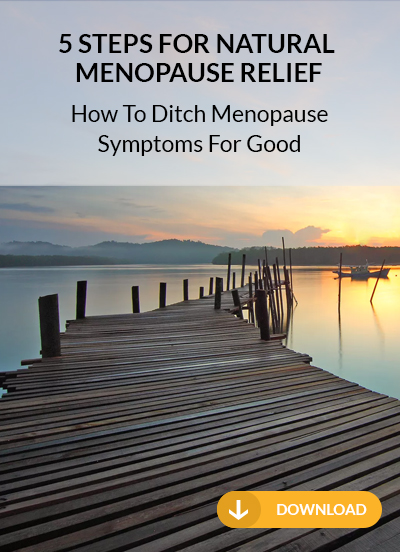Thinking about bioidentical hormone pellets and wondering what the actual procedure looks like? Here’s a clear, step-by-step overview from Joanne Sumpio Hinson MD PLLC, so you can decide with confidence.
What Are BHRT Pellets?
BHRT (Bioidentical Hormone Replacement Therapy) pellets are tiny, custom-compounded cylinders—usually estradiol and/or testosterone—that are placed just under the skin. They dissolve slowly over months, delivering a steady hormone level. Pellets are one of several BHRT delivery options (others include patches, gels, injections). The right option depends on your goals, health history, labs, and preferences.
Where Are Pellets Placed?
Pellets are typically inserted into the fatty tissue (subcutaneous layer) of the upper outer buttock or hip area. This spot is chosen because it’s discreet, has good blood flow for steady absorption, and allows you to sit and move comfortably afterward.
How Are Pellets Inserted? (Step-By-Step)
- Check-In & Review: We confirm your recent labs, current symptoms, medications, and any allergies. If you’re new to pellets, we’ll also confirm your personalized dose and discuss risks/benefits and alternatives before you consent.
- Position & Prep: You’ll lie on your side. We clean the skin thoroughly with an antiseptic solution to minimize infection risk.
- Local Numbing: We inject a small amount of local anesthetic (like lidocaine) to numb a quarter-sized area. You’ll feel brief stinging that fades as the area becomes numb.
- Tiny Incision: We make a small skin nick—usually just a few millimeters.
- Pellet Placement: Using a sterile trocar (a small, blunt introducer), we gently create a short track into the fatty layer and slide the pellets through the device. The pellets sit beneath the skin—no stitches are usually needed.
- Close & Cover: We apply skin-closure strips or a dissolvable stitch if needed, plus a pressure bandage.
- Done: You can typically drive yourself home and resume light activity the same day.
Time in office: Most insertions take about 10–20 minutes once you’re roomed, with only a few minutes of actual procedure time.
Does It Hurt?
You’ll feel a quick pinch and burn during the numbing injection. After that, most people describe only pressure or tugging—not sharp pain—during pellet placement. Mild soreness or bruising at the site for a few days is common and usually manageable with simple measures like cold packs and OTC pain relievers if approved for you.
What’s Recovery Like?
- Bandage care: Keep the area clean and dry for 24–48 hours, or as directed.
- Activity: Avoid heavy lower-body workouts, deep squats, cycling, and swimming or hot tubs for 3–5 days to reduce bleeding or pellet “push-out.” Gentle walking is fine.
- Normal sensations: Mild bruising, swelling, itching as the incision heals, or a small firm area under the skin are common and usually temporary.
- Watch for: Increasing redness, warmth, drainage, fever, severe pain, or if you notice a pellet at the surface—contact us right away.
How Soon Will I Feel A Difference?
Some people notice changes within days; for others, it builds gradually over 2–6 weeks as levels stabilize. Your response depends on dose, baseline levels, metabolism, and goals (e.g., hot flashes, sleep, mood, libido, energy). We’ll review how you’re feeling and repeat labs as appropriate.
How Often Are Pellets Reinserted?
Most women reinsert every ~3–4 months and most men every ~4–6 months, though timing varies. We base reinsertion on your symptoms, goals, and lab trends—not the calendar alone.
Who Is A Good Candidate?
Pellets may be considered for adults in perimenopause, menopause, or andropause who want a “set-and-forget” option with steady delivery. That said, pellets aren’t the only choice—and they’re not right for everyone. We always review your medical history (e.g., breast or prostate health, clotting risk, cardiovascular risk, liver health, migraines, mood history) and current medications before recommending any therapy.
Safety Considerations & Informed Consent
Our approach is “safety first.” We follow shared decision-making based on your goals, symptom relief, and the best available evidence, including the limitations and uncertainties around compounded hormones.
- Evidence & guidelines: The North American Menopause Society’s (NAMS) 2022 position statement discusses indications, risks, and benefits of hormone therapy broadly, emphasizing individualized care and the lowest effective dose for the shortest necessary duration. See: PubMed. The Endocrine Society and the American College of Obstetricians and Gynecologists (ACOG) caution that compounded bioidentical products (including pellets) are not FDA-approved and can vary in dose and purity; they recommend FDA-approved options when appropriate and emphasize careful monitoring if compounded products are used. See: Endocrine Society and ACOG Clinical Consensus (2023). For a balanced overview of menopausal hormone therapy benefits and risks, see NIH/NCBI review.
- Potential risks: Local issues (bleeding, infection, bruising, scarring, pellet extrusion), dose-related hormone side effects (breast tenderness, mood shifts, acne, hair changes, fluid retention), and rare but serious risks related to estrogen or testosterone therapy in some patients. We’ll review what applies to you, based on your history and labs.
- Monitoring: We pair symptoms with appropriate labs and follow-up. If we use compounded pellets, we discuss limitations, document informed consent, and reassess regularly.
- Alternatives: FDA-approved transdermal or oral therapies, and—in men—injectable testosterone, are options we can compare with you.
What Happens Before My First Insertion?
- Discovery consult: We learn your goals, review history, and order baseline labs.
- Personalized plan: We discuss pellet dosing versus patches/gels/injections and agree on a plan.
- Informed consent: We review benefits, risks, uncertainties, and aftercare.
- Scheduling: We book your in-office procedure and provide written instructions.
How Much Downtime Will I Need?
Most people return to desk work the same day. Plan to skip vigorous lower-body exercise and submersion (pools, hot tubs, baths) for several days. Avoid direct pressure on the site (e.g., tight waistbands) for the first 24–48 hours.
Ready To Get Started?
If you’re BHRT-curious and want a simple, steady option, pellets may be worth a conversation. Book a discovery consult with us.
Sources
- North American Menopause Society (NAMS). 2022 Hormone Therapy Position Statement: https://pubmed.ncbi.nlm.nih.gov/35797481/
- Endocrine Society. Compounded Bioidentical Hormone Therapy Scientific Statement: https://www.endocrine.org/advocacy/position-statements/compounded-bioidentical-hormone-therapy
- ACOG. Compounded Bioidentical Menopausal Hormone Therapy (Clinical Consensus, 2023): https://www.acog.org/clinical/clinical-guidance/clinical-consensus/articles/2023/11/compounded-bioidentical-menopausal-hormone-therapy
- NIH/NCBI. Menopausal Hormone Therapy – Risks And Benefits Overview: https://pmc.ncbi.nlm.nih.gov/articles/PMC8034540/






0 Comments